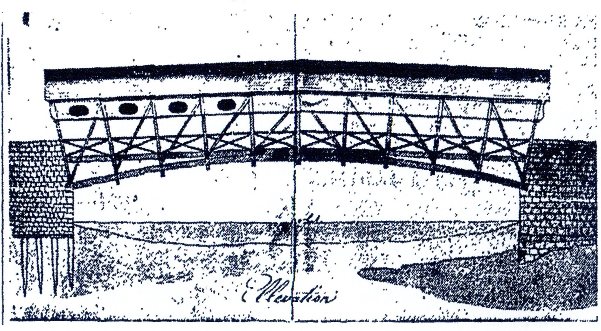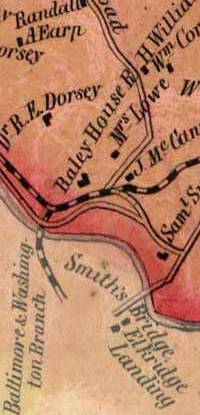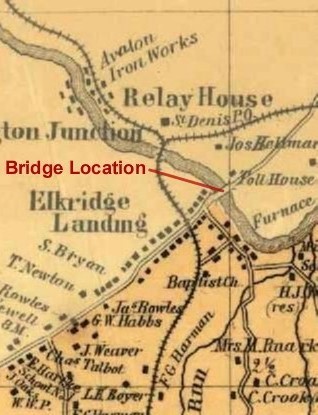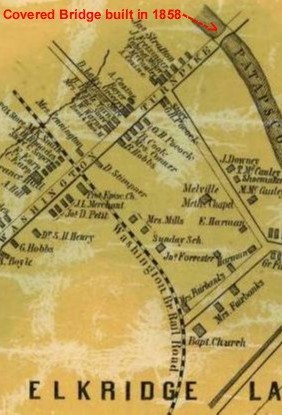 |
| Illustration appearing in the Baltimore Sun on August 19, 1934 under the title "Before The Steel Bridge's Day." The caption under the illustration read "A design for the old-time covered bridge over the Patapsco at Norwood's Ferry, with the elliptical windows only party indicated. |


